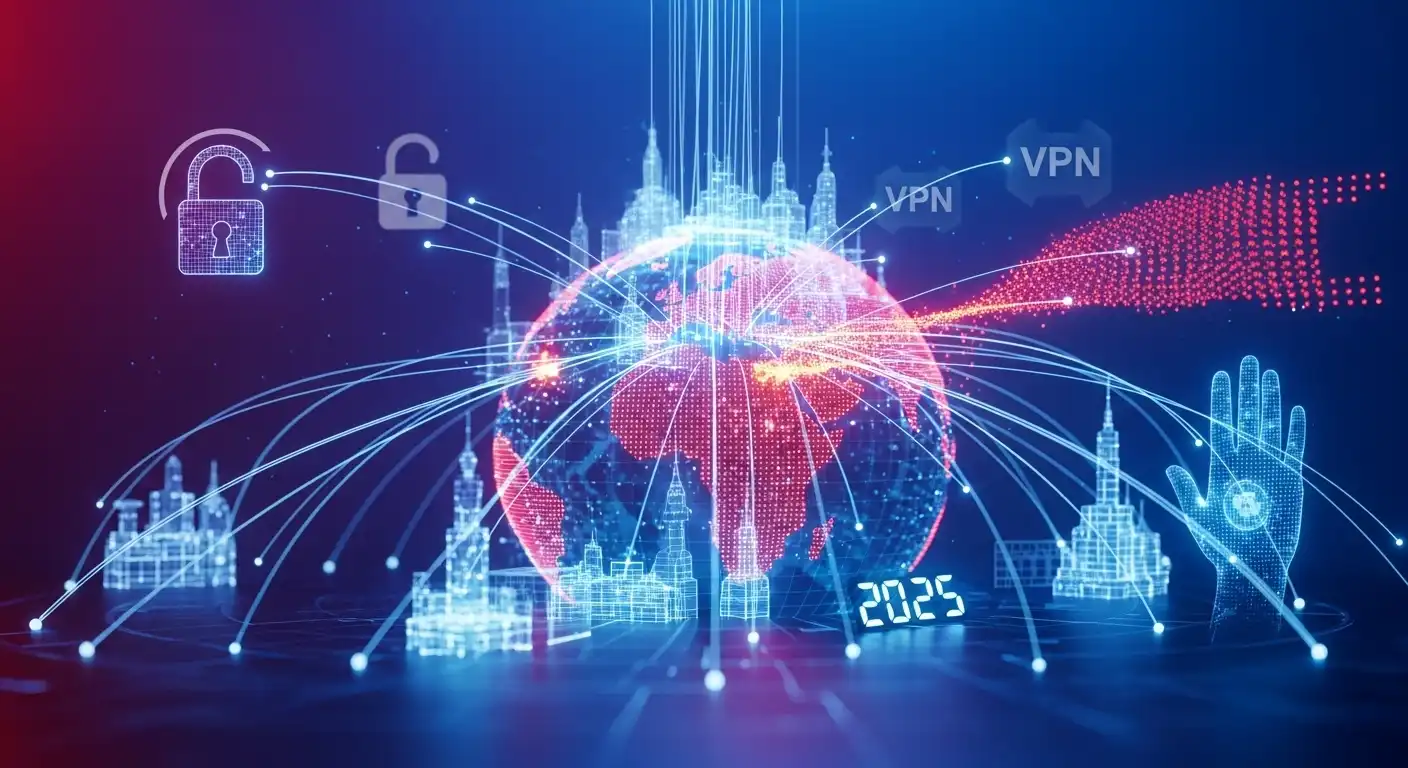How Governments Are Regulating VPN Traffic in 2025 In 2025, how governments are regulating vpn traffic has become a major policy and technical battleground across the world. As VPN usage grows—driven by remote work, streaming, and privacy concerns—states are deploying a mix of legal, technical, and economic instruments to control, monitor, or restrict encrypted tunnels. This article examines the global landscape, the technical tools in use, legal frameworks, country case studies, impacts on businesses and consumers, and practical guidance for staying private and compliant. Global Landscape: Why Governments Target VPN Traffic Governments target VPN traffic for several interconnected reasons. First, national security and law enforcement concerns are used to justify monitoring or restricting encrypted channels that can hide illicit activity. From terrorism financing to cybercrime operations, encrypted tunnels complicate lawful interception and attribution. Second, content control and censorship remain central in authoritarian contexts where access to information or social platforms is politically sensitive; VPNs are a direct circumvention tool. Third, economic motivations play a role. Governments seek to enforce local content licensing, e-commerce rules, and taxation. VPNs allow users to spoof location, access geo-locked services, or evade digital taxes, creating a perceived need for regulation. Finally, the proliferation of enterprise VPNs for remote work means states must balance business continuity with security and compliance — a complex policy tension. The regulatory tone varies by region. While some democracies adopt disclosure and data-retention rules that target providers, others favor outright blocking or technologically aggressive measures like protocol fingerprinting. Understanding these drivers is essential for predicting future regulation and designing responses. 1. National security and content control National security is the most often-cited rationale for regulating VPNs. Governments argue that fully encrypted tunnels can shield planning and coordination of criminal acts, making interception difficult. This has prompted broad language in security laws that can be applied to VPNs and providers. Content control is tightly linked: when a government aims to block websites or platforms, VPNs provide a popular bypass. As a result, states invest in technical capabilities to detect and disrupt VPNs while framing such actions as necessary for social stability or national interest. 2. Economic and taxation reasons Regulators increasingly view VPN traffic through an economic lens. VPNs can enable cross-border streaming and shopping that undermines localized licensing or brings revenue outside tax systems. Some countries now require VPN providers to register and cooperate on tax compliance or block servers that enable large-scale evasion. This economic angle often motivates collaboration with payment processors and hosting companies to ensure enforcement extends beyond just network-level blocks. Technical Methods Governments Use to Regulate or Block VPNs Technical regulation of VPN traffic has evolved fast. Deep Packet Inspection (DPI) now often runs alongside machine-learning-based fingerprinting to identify VPN protocols even when encryption hides payloads. Protocol-level signatures for OpenVPN, WireGuard, and other tunneling technologies can be detected via characteristic handshake patterns, timing, and packet sizes. Other measures include SNI (Server Name Indication) filtering, IP address blacklisting, and TLS fingerprinting. Active techniques such as active probing—where censors initiate a handshake to test if a server behaves like a VPN endpoint—have become more sophisticated. Governments are also experimenting with targeted throttling and port blocking to degrade VPN effectiveness instead of outright blocking, which can reduce collateral damage to legitimate traffic. Finally, collaboration with large platform operators (CDNs, cloud providers) enables upstream enforcement: providers may be required to terminate suspicious VPN servers or respond to legal requests. This pushes many consumer VPNs to change their server infrastructure or adopt obfuscation methods. 1. Deep Packet Inspection and protocol fingerprinting DPI inspects packet headers and metadata to classify traffic flows. When combined with protocol fingerprinting, it can identify the distinct patterns of a VPN handshake even if encryption prevents payload inspection. For instance, WireGuard has a characteristic initial handshake packet size; OpenVPN often uses TLS patterns that can be fingerprinted. Countermeasures by VPN vendors include using TLS 1.3 and TLS-based tunnels that mimic HTTPS, traffic shaping to match standard web behavior, and packet padding. However, DPI vendors respond by incorporating behavioral analytics and machine learning to catch obfuscated traffic. 2. IP blocking, SNI/TLS methods, and QUIC detection IP blacklists remain a blunt instrument but are effective where VPN providers use static ranges. To mitigate, providers rotate IPs and buy residential proxies. SNI filtering inspects unencrypted handshake fields to block domain-based bypass; Encrypted Client Hello (ECH) and ESNI developments are changing this cat-and-mouse game, but adoption is uneven. With QUIC becoming widespread, detection shifts: QUIC-based VPNs or tunneling over HTTP/3 require new fingerprints. Governments are investing in QUIC inspection tools and correlational analysis to maintain detection capabilities. 3. Active probing and traffic shaping Active probing sends test requests to suspect servers to confirm VPN behavior, helping censors differentiate legitimate services from tunnels. Traffic shaping—deliberately slowing or introducing latency—can degrade VPN performance and reduce user adoption without full blocking. While active probing can be effective, it raises false-positive risks. Sophisticated VPNs respond in ways that mimic web servers to avoid detection, increasing costs and complexity for both sides. Legal and Policy Approaches: Laws, Licenses, and Compliance Legal frameworks shape how technically feasible measures are deployed. A few key approaches have emerged in 2025: mandatory VPN registration or licensing, data retention and logging requirements for providers, and extraterritorial enforcement through cooperation agreements or sanctions. Some countries now mandate that VPN operators hold local licenses, put physical infrastructure within jurisdiction, or use government-approved servers. Other states require retention of connection metadata and the ability to perform lawful intercept. These legal demands push many small providers out of regulated markets or into gray areas. Courts and civil society still influence outcomes in many democracies: privacy advocates challenge overbroad mandates while businesses lobby for exceptions. International human rights law also factors into debates about proportionality and freedom of expression. 1. Mandatory VPN registration and licensing Several states have introduced licensing regimes requiring foreign or domestic VPN operators to register, provide owner information, and host some infrastructure locally. License holders may be given narrow legal protections but





